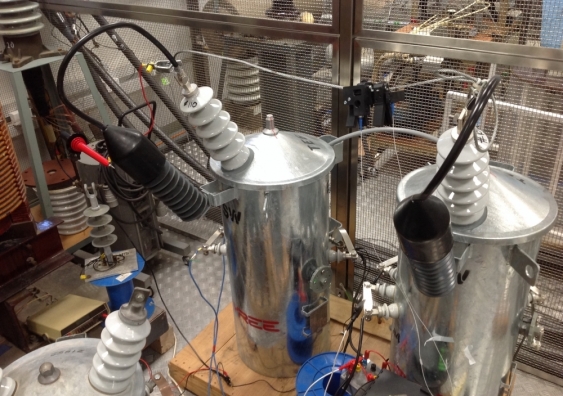Two ideas bring promise of reliable energy in the outback
In projects with global significance, particularly in developing countries, UNSW engineers are solving the problem of intermittent energy supply in outback and rural Australia.
In projects with global significance, particularly in developing countries, UNSW engineers are solving the problem of intermittent energy supply in outback and rural Australia.

Isabelle Dubach
Media and Content Manager
+61 432 307 244
i.dubach@unsw.edu.au
For remote communities across Australia, and potentially the world, the dream of a reliable electricity supply is getting tantalisingly close to becoming a reality.
Funded by philanthropic powerhouse the Tyree Foundation and led by Professor Joe Dong, a national expert in smart electricity, 30-plus UNSW researchers are working on two significant electrical engineering projects to provide solutions for social issues, including those highlighted by the Bridging the Gap Initiative for Indigenous Australians.
The first project aims to develop safe, reliable microgrids for remote communities in Australia, while the second will vastly improve SWER (single wire earth return) power transmission to rural users.
Commenced in 2016, the $3.5m, three-year initiative is now well underway, and according to Dong, from UNSW Electrical Engineering and Telecommunications, looking for the best location to pilot microgrid solutions.
“Microgrids are small-scale electricity supply networks which rely on a mix of power sources including PV solar, thermal, diesel generators, wind, fuel cells and battery storage. A microgrid can be connected to, or operate independently of, the national transmission network and they are increasingly seen as an excellent way to improve access to energy services in remote areas,” says Dong.
“We are developing models to plan for and optimise this broad range of energy sources to allow them to be interconnected. My role is to design different control methodologies and modelling for the microgrid while my colleagues are working on the power electronics, hardware, and systems side to operate and design it.”
The ideal outcome of the project, which Dong says they are well on the way to providing, is an affordable solution that links existing best of breed and locally developed components into an architecture that can be safely maintained by the community, rather than having to rely on support that could be hundreds of kilometres away.
The second project is focused on improving SWER power transmission to rural users and is being designed to complement the microgrid system. Associate Professor Toan Phung is working on the project and says that SWER is commonly used to service sparsely-populated rural areas and remote communities.
“In these places it is too expensive to install the normal three-phase transmission/distribution system, so power companies use SWER. Currently, there are about 200,000 kilometres of SWER lines throughout Australia with steadily growing demand,” he says.
SWER lines are long radial single-conductor lines, typically about 50-100 kilometres in length, with spur lines tapped off to supply individual consumers. The ground serves as the current return path. They are prone to poor reliability and Phung explains that traditional fault finding is difficult and time-consuming. It relies on customers reporting the fault and a line crew being sent out to physically check the lines to identify where the problem is.
Phung says their solution is a distributed monitoring system with units mounted on the poles to monitor, in real-time, the voltage, current, power, and the overall condition of the line. This will enable engineers to accurately pinpoint faults over long distances and restore power faster. Wireless communication enables monitoring and control from a remote command centre. The units also have ‘local intelligence’, which means they can process and store information as well as make decisions.
This will not only help stabilise the electricity supply and make the whole system more efficient, it will make it safer, too. “Many electricity wires run over remote bushland, and importantly, within the Australian context, we have bushfires to consider as well,” says Phung.
“The cause of a number of the devastating 2009 Black Saturday bushfires was attributed to powerlines, so in addition to providing a reliable electricity supply, we are also improving safety for remote communities as well.”
A safe, reliable electricity supply has the potential to vastly improve the lives of Australians living in remote areas but, continues Dong, there are significant international implications too.
“If we are successful, and I believe we will be, our technology can be applied in remote areas the world over and could have positive social impacts particularly in developing countries. These projects could be a game changer for remote communities, giving them security and autonomy in their energy supply,” he says.